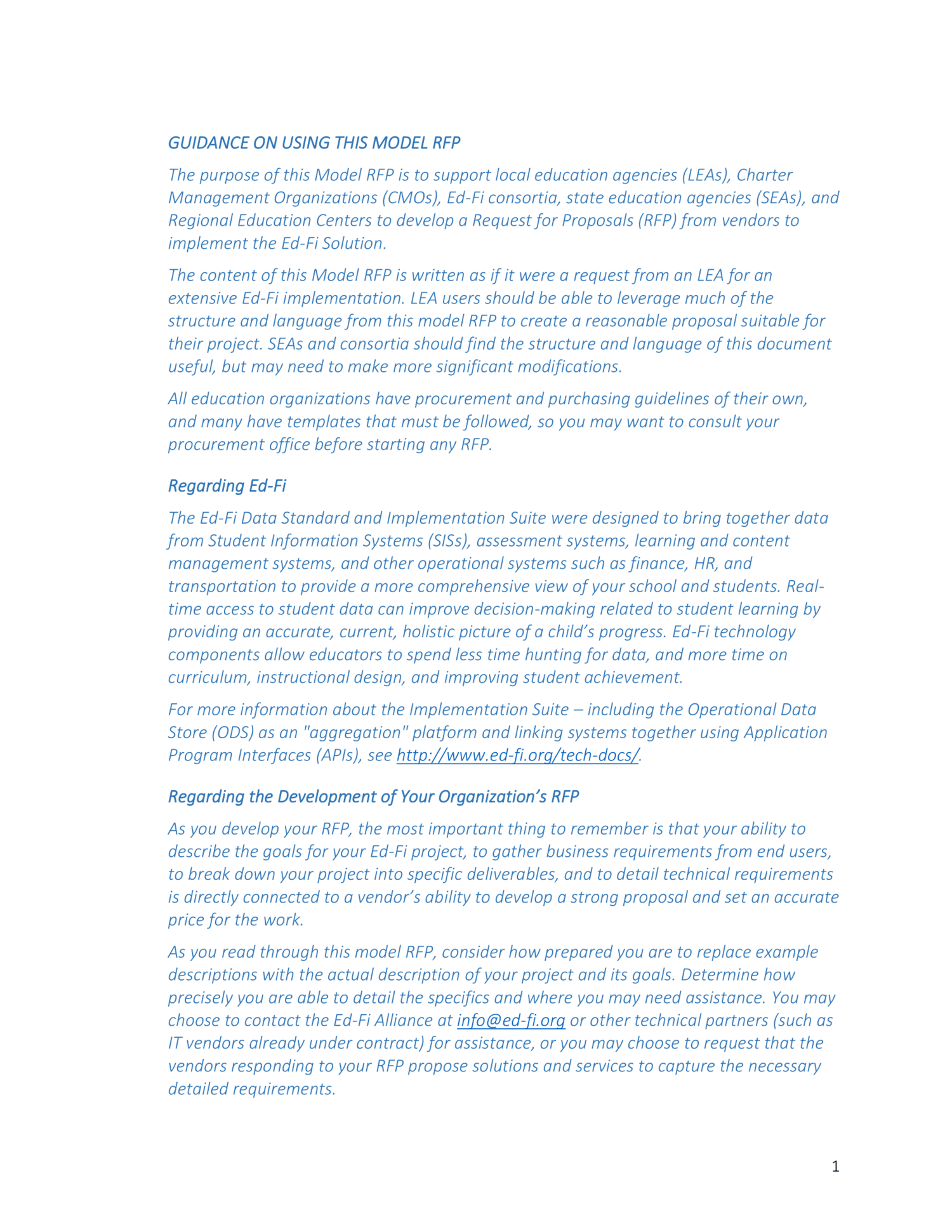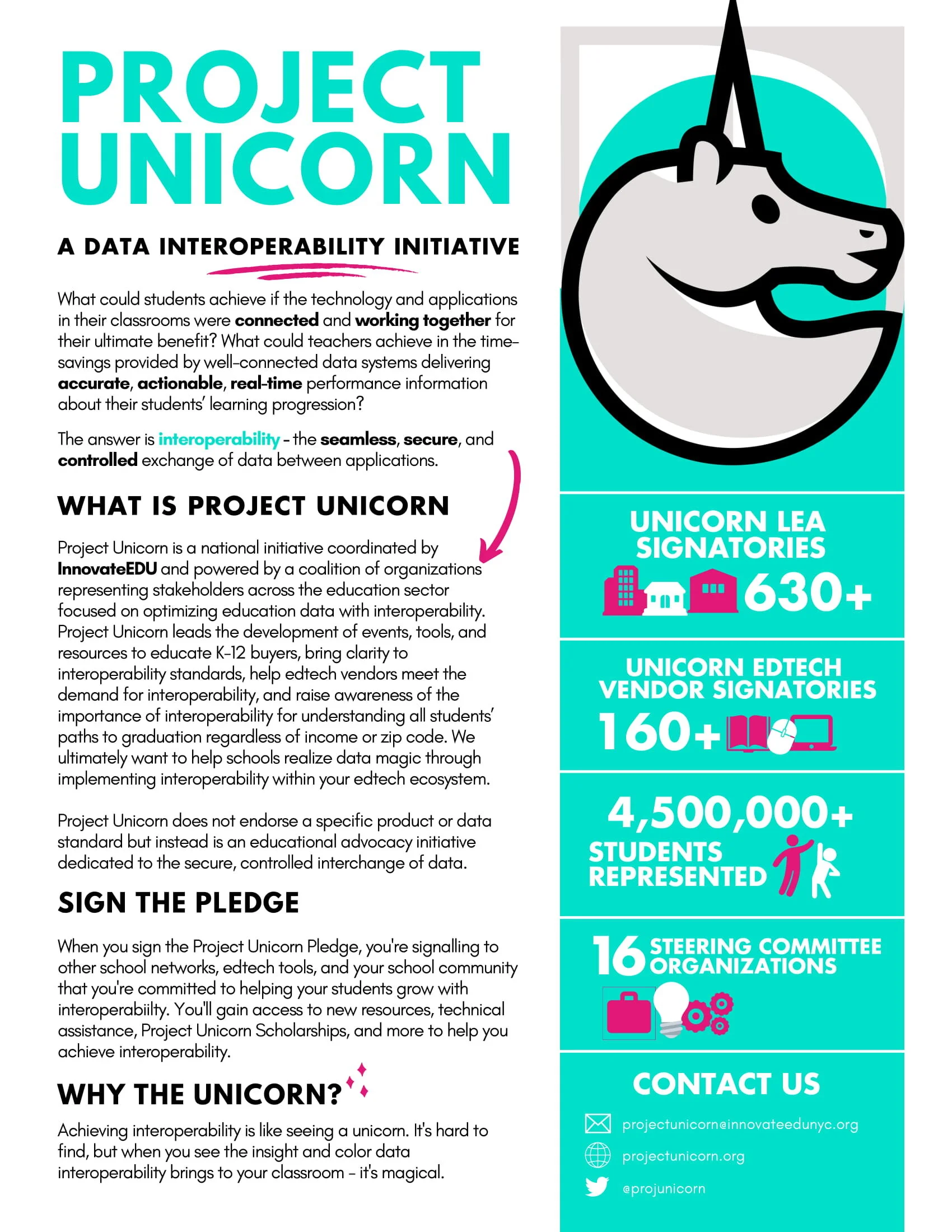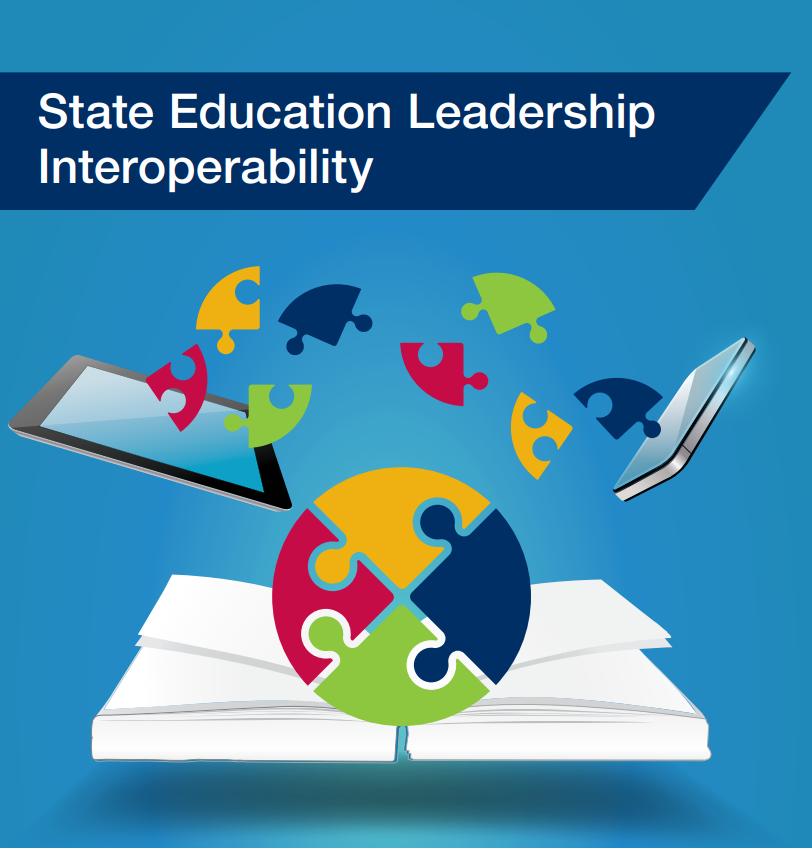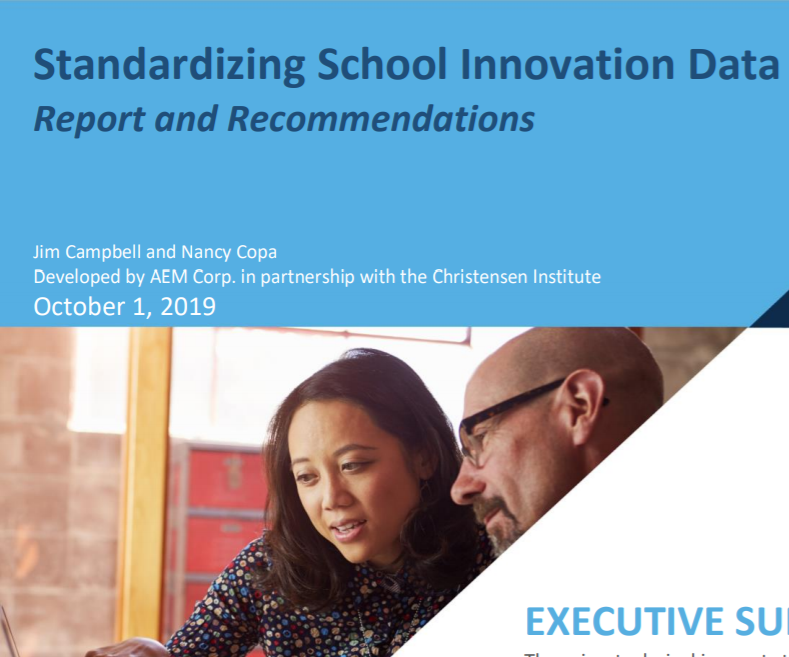The potential of cooperatives to build capacity for implementing Statewide Longitudinal Data Systems (SLDS) is vast. With the ability to foster interagency cooperation and strengthen the data ecosystem, this strategy presents an innovative approach. This resource provides suggestions and examples of incorporating cooperatives into your SLDS initiative. Learn about the key benefits, anticipate challenges, and explore recommendations for state leaders.
Read MoreThe Standards Glossary by Project Unicorn is a directory that contains a list of Interoperability Standards in K-12.
Read MoreAs local and state governments, businesses, and institutions across the country implement the first phases of reopening after weeks of lockdown, schools are beginning to plan for learning this fall…
Read MoreThis infographic illustrates that, when all the important people in their lives have appropriate access to information, individuals get the support they need to succeed.
Read MoreLearn about the benefits of signing the Project Unicorn pledge which includes joining a community of districts and vendors, access to other resources, scholarships, and technical support.
Read MoreLearn about how you can get started with Data Interoperability if you are a state leader.
Read MoreLearn about the different organizations in K-12 that provide data standards to make Data Interoperability possible.
Read MoreThis issue brief shares state policy recommendations and action steps for policymakers who are supporting the redesign of educator workforce systems.
Read MoreInsert language from our partners at EdFi in your requests for proposals so that your school or district procures only technologies that are interoperable.
Read MoreHow does your school network rank? Review the rubric to assess your tier of interoperability.
Read MoreLearn more about the Project Unicorn initiative.
Read MoreRead more about how highlights how state leaders tackle data interoperability with the emergence of data standards for student information, assessment, digital content, and other educational applications. Provided by SETDA.
Read MoreRead this 1-pager to learn more about Project Nessie a state initiative by CCSSO and SETDA focused on Nurturing Engagement & Support for State Education Interoperability Efforts.
Read MoreThis report urges school innovation funders, intermediaries, and researchers to engage more proactively with standards bodies to integrate school design concepts into existing standards to maximize adoption, rather than pursuing a new standard
Read MoreRead MoreData should maintain its meaning as it gets passed between schools, districts, and even states. Interoperability standards assist in providing solutions for increasing concerns over linking student, teacher, school, and district data to create actionable outcomes.
Corey Matlack, No.Inc
Read More“The Oklahoma SDE serves 512 traditional school districts, 28 charter school districts, 58 charter school sites, and over 1,795 schools. With over 693,700 students in the state, the OK SDE works hard to meet the challenging needs of students with educational technology.”
Ariana Bauer, CPSI, Ltd.
EdMatrix is a cooperative effort to create a directory of Education Standards. The emphasis is on Education Data standards but important Competency & Achievement standards and Design & Practice standards are also included.
Read MoreFrom Ed-Fi Alliance, join Troy Wheeler as he discusses the value and role of technology providers in the larger movement towards interoperability.
Read MoreLeveraging Data for Academic Excellence This report examines the current data interoperability efforts in nine states: Delaware, Georgia, Michigan, Nebraska, North Carolina, Oregon, Utah, Wisconsin, and Wyoming. Throughout the report, states explore the successes and challenges in making interoperable solutions where data is seamlessly connected and readily available for use by decision makers, teachers, parents, and students.
Read MoreThis infographic from the Data Quality Campaign shows how critical data is to personalizing education.
Read More





























